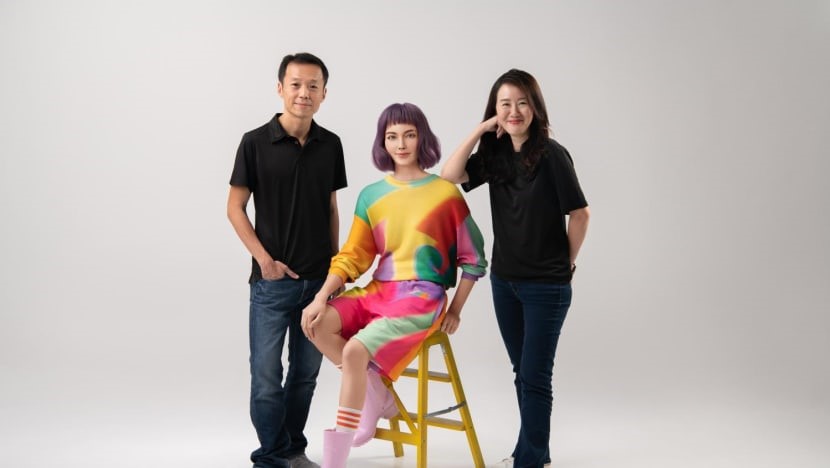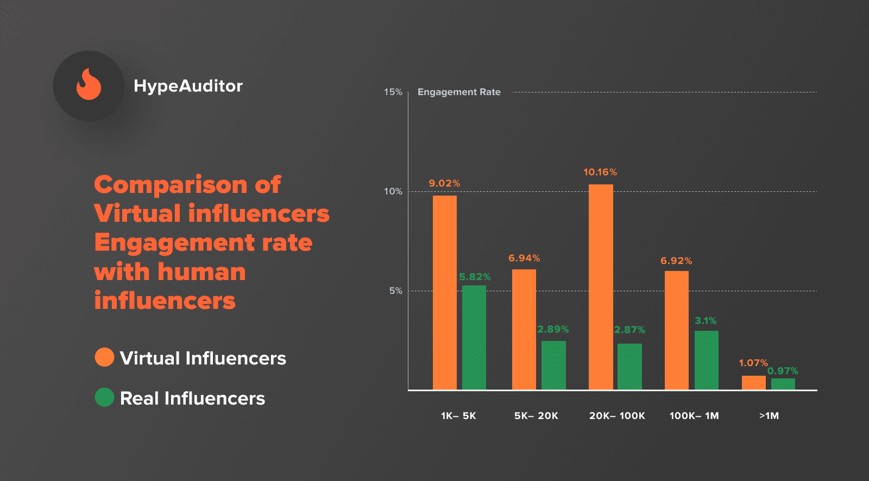'Virtual Influencer: A wave of the future'
Dec 2022
Virtual Influencer RAE: Photo: CapitaLand (Image Source : CNA- channelnewsasia.com)
We live in a digital age where social media plays a significant role in influencing individuals. Influencers are often used by businesses to promote their brand and products. According to influencer marketing hub, influencer marketing is expected to reach $16.4 billion by 2022 globally. Influencers are used by around 67% of businesses to market their brands. As a result, influencers play an important role in promoting a brand or product.
Human influencer
Businesses plan and spend money to promote their brand through human influencers. The budget for human influencers is mostly decided by the type of influencer based on followers.
There are different types of influencers, including nano, micro, macro, and mega influencers.
Similar to how salary slabs for office workers can be found, each category of influencer is defined depending on the slab of the assigned followers. For instance, nano-influencers, micro-influencers, mid-tier influencers, macro-influencers, mega influencers.
Influencers use social media to influence consumers, develop trust in products and services, and raise awareness about certain social concerns. During COVID19, many influencers posted aspirational content to assist individuals in coping with the circumstances.
However, given the current state of advanced technology, the dependence on human influencers may be diminished. A comparison published by hypeAuditor confirms this.
Image Source : The Top Instagram Virtual Influencers in 2020 (hypeauditor.com)
Virtual Influencer
Virtual influencers will rule the following period. A virtual influencer is a computer-generated digital image utilised similarly to human influencers. The advantage of using a virtual influencer is that several iterations can be applied.
According to Statista's data, 58% of customers follow virtual influencers. Businesses are developing more virtual brand influencers. One of the primary benefits of a virtual influencer is that they never age and are never involved in scandals.
Remember, the concept of virtual character was traced way back in 1930. The virtual influencers of today are descendants of imaginary characters such as Cynthia the plaster mannequin, Hatsune Mike, Ami Yamato, etc. A few of the virtual influencers are shown below:
Table Source : Who Was the First Virtual Influencer? - VirtualHumans.org
Global Virtual Influencer
Himanshu Goel, a management graduate, created "KYRA", India's first virtual influencer. It made its first appearance in 2021 and was updated in 2022. According to January 2022 data, there are around 100000+ followers. "KYRA" also took part in the metaverse fashion event and received positive feedback from customers.
Similarly, many other businesses use virtual influencers to promote their brands. For example, on December 2, 2022, Capital Land (Singapore) introduced a virtual influencer named "RAE" and engaged in various campaigns with fashion labels such as Moschino and Gucci.
South Korean businesses also use a variety of virtual influencers to market their products and services. Businesses are pleased to work with virtual influencers since they can manage and alter activities to suit their needs.
They are happy that these virtual influencers don't question on the content and its viability. AESPA, ROZY, KIM-JU-HA, DAIN are a few names of South Korean virtual influencers. In the future years, they will continue to maintain their dominance with an increasing number of new virtual influencers powered by AI.
Future with Virtual Influencer
Because of their dynamic qualities, AI-generated virtual influencers will undoubtedly continue to dominate the market. The designer is able to regulate the activity utilising effective content based on environmental changes.
By 2025, virtual influencers will account for 30% of all influencer marketing spending, according to Gartner. Once marketers grasp the concept, the potential of virtual influencers becomes apparent since it is a cost-effective proposition with less hassles.
Source : India's First Virtual Influencer is 21-year-old Kyra with over 95K Followers on Instagram (msn.com), The rise of virtual influencers: the phenomena taking over fashion marketing (fashionunited.com) ; Gartner Report; CapitaLand reveals it created virtual influencer Rae to test commercial viability of new technology - CNA (channelnewsasia.com)
Also Read : 'Drone-Racing'
Share This:


